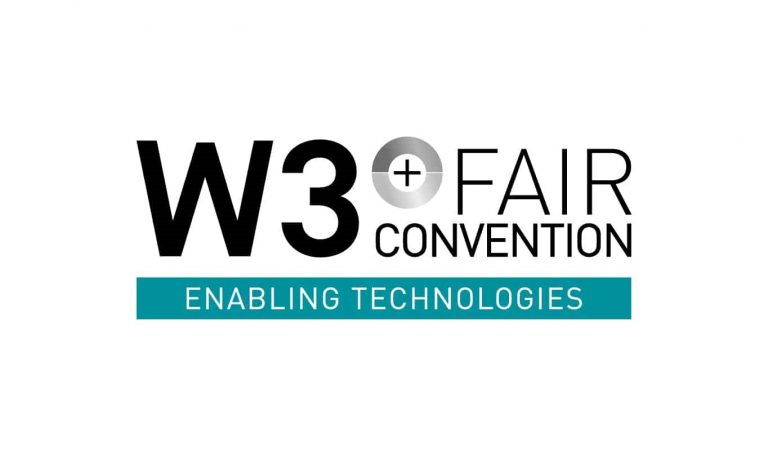10 Powerful Applications & Benefits of Thermally Conductive Epoxies in Modern Industries
Epoxyset Inc. Introduction to Thermally Conductive Epoxies
In today’s high-performance world of electronics and engineering, thermally conductive epoxies are the unsung heroes keeping devices cool and reliable. These advanced adhesives are engineered to conduct heat efficiently while providing strong mechanical bonding and electrical insulation. Unlike traditional epoxies, which trap heat, thermally conductive versions transfer it away from sensitive components, reducing the risk of overheating and failure.
At their core, these epoxies consist of a resin matrix filled with thermally conductive particles like aluminum oxide, boron nitride, or silver. This unique composition enables them to combine adhesive strength with efficient heat transfer—a critical property in fields where temperature stability determines performance.
The global demand for thermally conductive epoxies is rising rapidly, driven by innovations in electric vehicles (EVs), 5G infrastructure, and LED technology. Engineers and manufacturers rely on them to optimize heat management without sacrificing insulation or mechanical strength.
Key Properties and Composition
Thermally conductive epoxies are specifically formulated to strike the perfect balance between thermal conductivity and electrical insulation. Here’s a closer look at what makes them so effective:
- Thermal Conductivity: Typically ranges between 0.8 and 5.0 W/m·K, depending on filler type and concentration.
- Fillers: Common choices include aluminum oxide (Al₂O₃), boron nitride (BN), aluminum nitride (AlN), and sometimes silver for high-end applications.
- Curing: Available as one-part (heat-cured) or two-part (room-temperature cured) systems.
- Adhesion: Strong bonding to metals, ceramics, and plastics ensures mechanical stability in harsh conditions.
In short, these materials are engineered to perform under stress—resisting thermal cycling, vibration, and moisture exposure.
How Thermally Conductive Epoxies Work
The working principle of thermally conductive epoxies revolves around heat transfer through filler networks. When heat is generated by an electronic component, it travels through the epoxy matrix and is efficiently spread across the bonded surface via the conductive fillers. The epoxy serves as both a bonding agent and a thermal bridge.
The filler particle size, shape, and distribution play key roles in maximizing performance. For instance, spherical fillers create continuous thermal pathways, while plate-like fillers (like BN) enhance lateral heat spreading. Once cured, the epoxy maintains its thermal properties for years, even in extreme environments.
Major Benefits of Using Thermally Conductive Epoxies
- Superior Heat Management: Keeps components cool by dissipating heat effectively.
- Improved Reliability: Reduces thermal stress and extends component lifespan.
- Electrical Insulation: Prevents short circuits while maintaining high thermal transfer.
- Durability: Withstands vibration, humidity, and thermal cycling.
- Versatility: Bonds a wide range of substrates used in electronics and automotive systems.
Whether in a power inverter or a satellite module, these adhesives ensure consistent thermal performance under demanding conditions.
Common Industrial Applications
Thermally conductive epoxies are used across a wide range of industries:
| Industry | Applications |
|---|---|
| Electronics | Bonding heat sinks, circuit boards, and transistors |
| Automotive | Electric vehicle battery packs, sensors, and control units |
| Aerospace | Avionics cooling systems and satellite modules |
| LED Lighting | Thermal interface between LED chips and heat sinks |
| Renewable Energy | Wind turbine inverters and solar panel junction boxes |
Their ability to combine thermal conductivity with mechanical adhesion makes them indispensable in high-reliability applications.
Types of Thermally Conductive Epoxies
- One-Part Systems: Pre-mixed, heat-cured, and ideal for automated production lines.
- Two-Part Systems: Require manual mixing, offering flexibility for on-site repairs or prototypes.
- Electrically Conductive Grades: Incorporate silver or graphite fillers for conductivity.
- Flexible Grades: Formulated to endure vibration and thermal expansion mismatches.
Each type is tailored for specific engineering needs, ensuring optimal performance for both small-scale and large-scale manufacturing.
Comparison: Epoxy vs. Thermal Grease and Silicone Adhesives
When it comes to heat management, engineers often face a dilemma: should they use thermally conductive epoxy, thermal grease, or silicone adhesive? While each has its place, their properties differ significantly in performance, durability, and cost.
| Property | Thermally Conductive Epoxy | Thermal Grease | Silicone Adhesive |
|---|---|---|---|
| Thermal Conductivity (W/m·K) | 1–5 | 0.8–3 | 0.5–3 |
| Adhesive Strength | Excellent | Poor | Moderate |
| Electrical Insulation | Strong | Variable | Strong |
| Curing Process | Permanent | Non-curing | Semi-curing |
| Reworkability | Low | High | Medium |
| Durability | Excellent | Fair | Good |
Verdict:
Thermally conductive epoxies offer superior long-term stability and bonding strength, making them ideal for permanent applications like mounting heat sinks or encapsulating power modules. In contrast, thermal grease is better for temporary or replaceable joints, while silicone adhesives serve as a middle-ground solution for flexible assemblies.
How to Choose the Right Thermally Conductive Epoxy
Selecting the best thermally conductive epoxy depends on your specific application, environment, and performance goals. Here are the key factors to consider:
1. Thermal Requirements
If your components generate high heat (e.g., power transistors or EV batteries), opt for an epoxy with ≥3.0 W/m·K thermal conductivity.
2. Electrical Characteristics
For circuits requiring insulation, choose electrically insulating formulations (BN or Al₂O₃ fillers). For grounding or EMI shielding, go with silver-filled conductive epoxies.
3. Environmental Resistance
Applications in automotive and aerospace sectors require moisture-resistant, vibration-tolerant, and temperature-stable compounds.
4. Curing Method
- One-part epoxies suit automated assembly lines.
- Two-part systems are great for manual or field applications.
5. Compatibility
Ensure the epoxy bonds well with your substrate—whether it’s metal, ceramic, or plastic—to prevent delamination under thermal cycling.
Pro Tip: Always request a technical datasheet (TDS) from the manufacturer before selection to verify thermal, mechanical, and curing properties.
Step-by-Step Application Guide
Applying thermally conductive epoxy correctly ensures optimal heat transfer and mechanical performance. Here’s a practical guide:
- Surface Preparation: Clean surfaces thoroughly with isopropyl alcohol to remove grease, dust, and oxidation.
- Mixing: For two-part systems, mix resin and hardener at the recommended ratio (commonly 1:1 or 2:1).
- Application: Spread the epoxy evenly using a spatula or automated dispenser. Avoid trapping air bubbles.
- Curing: Follow manufacturer instructions—room temperature or heat curing between 80–150°C.
- Inspection: Check for complete coverage and void-free bonding using infrared or thermal imaging tools.
A properly applied epoxy layer ensures consistent thermal contact and mechanical reliability over years of operation.
Testing and Performance Evaluation
The reliability of thermally conductive epoxies is validated through standardized testing methods such as:
- Thermal Conductivity Testing (ASTM D5470): Measures the material’s heat transfer efficiency.
- Shear and Peel Strength Tests: Evaluate bonding power between substrates.
- Thermal Cycling Tests: Simulate real-world conditions of expansion and contraction.
- Aging and Humidity Tests: Assess long-term performance under stress.
Environmental and Safety Considerations
Thermally conductive epoxies are generally safe, but proper handling is crucial:
- Use gloves and eye protection during application.
- Work in well-ventilated areas to avoid inhaling vapors.
- Store materials in cool, dry conditions to maintain stability.
- Opt for RoHS- and REACH-compliant formulations that are free from hazardous substances.
With increasing environmental awareness, several manufacturers now offer bio-based epoxy resins that reduce carbon footprint while maintaining high thermal performance.
Future Trends in Thermally Conductive Materials
The future of thermally conductive epoxies is bright, driven by innovation and sustainability. Key trends include:
- Graphene and Carbon Nanotube Fillers: Providing ultra-high thermal conductivity with minimal filler loading.
- Smart Thermal Adhesives: Materials that dynamically adjust conductivity based on temperature.
- 3D Printable Epoxies: Revolutionizing manufacturing with customizable heat paths.
- Lightweight Composites: Reducing material density while maintaining superior heat transfer.
As the electronics and EV sectors continue to expand, demand for these advanced adhesives will surge, redefining the limits of heat management technology.
News published on October 27, 2025 by International OptoIndex



